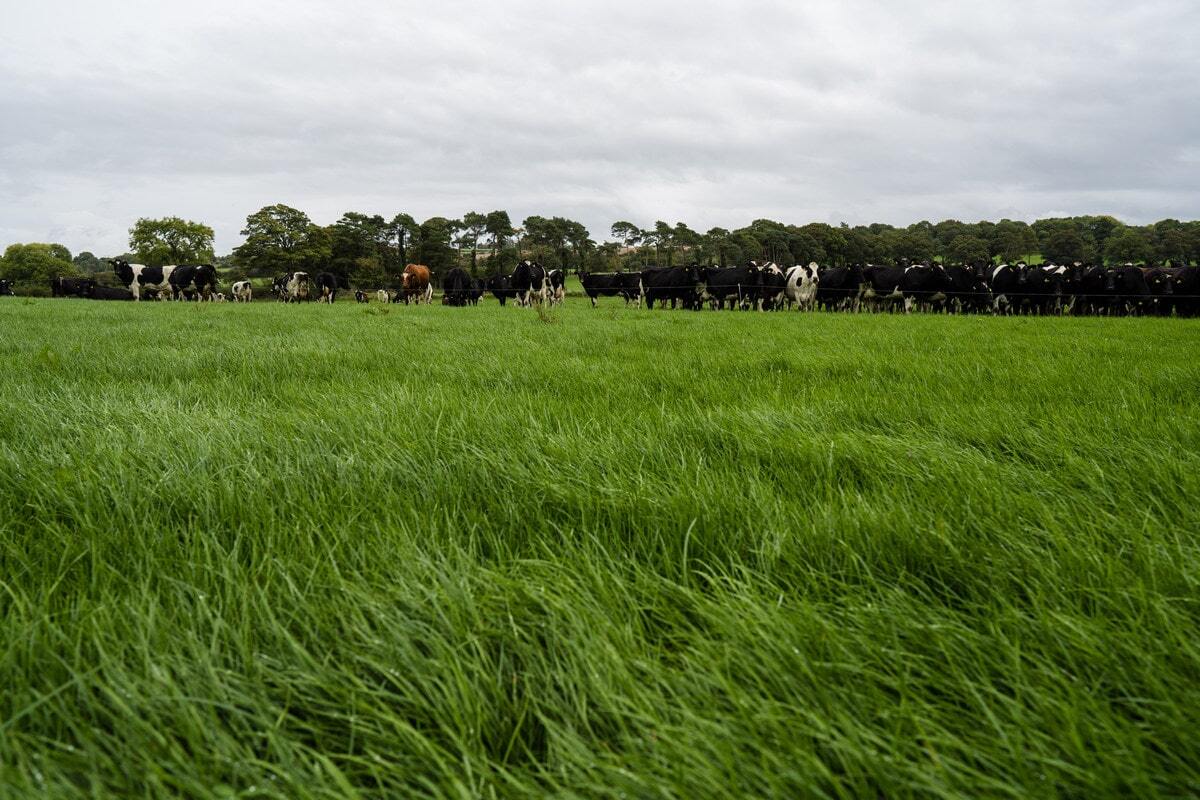You might have seen grassland experts debating diploid vs tetraploid ryegrass and which you should focus on. But making the right decision for your farm isn’t so straightforward, with diploid and tetraploid perennial ryegrass (Lolium perenne) varieties each having unique benefits, discusses grass and forage expert Harley Brown-Keech.
What is diploid perennial ryegrass?
Diploid grass' name is based on Greek origins for having two sets of chromosomes per cell, which impacts its functionality in grassland farming.
Typically, it has a 2% higher dry matter content than tetraploid ryegrass. This is due to the smaller cells and lower cell-wall-to-cell contents ratio of diploid ryegrass.
When comparing pure diploid vs tetraploid ryegrass swards, livestock would need to consume more tetraploid to achieve the same nutritional intake of the diploid sward.
However, it’s important to remember that there are pros and cons for both grasses.
What is tetraploid perennial ryegrass?
Tetraploid grass also gets its name from Greek origins but has four sets of chromosomes per cell. This is achieved during the plant breeding process with a chemical applied (Colchicine) at the point of pollination to split the original two sets of chromosomes into four.
Comparatively, you’ll notice that tetraploid grass seed is bigger and heavier, enabling it to compete better with older swards and germinate quicker than diploid grass seed. This makes tetraploid perennial ryegrass (Lolium perenne) better suited for overseeding pasture.
Tetraploid ryegrass has larger, more upright leaves that are easier for livestock to graze. However, the more open growth habit means they are less suited to heavier soil due to the higher risk of poaching.
With tetraploid grass, farmers often highlight palatability, noting that livestock prefer to graze tetraploids over diploids.

Benefit from both
Diploids are more persistent and create a denser sward, better suited to wetter conditions and where long-term grazing is also required. Offering superior ground cover, diploid swards are less open and at lower risk of weed ingress. These swards are also better at resisting poaching.
Tetraploids, meanwhile, have a more upright growth habit and can be faster establishing while being naturally higher water-soluble carbohydrates (WSC), which can aid digestion and help reduce emissions, as found in Germinal’s Aber High Sugar Grass (HSG) range.
Aber HSG varieties have been bred with greater levels of WSC, which feed rumen microflora, helping livestock capture more of the plant proteins for greater meat and milk production. This is what makes Aber HSG varieties highly productive and able to reduce emissions.
After highlighting the benefits of diploids and tetraploids, you need to remember that it doesn’t have to be one or the other. Mark Housby, winner of the 2021 Grassland Manager of the Year category at the Farmers Weekly Awards, uses Aber HSG 4 Dairy System because of the benefits he gets from using both.
“We like the combination of diploid and tetraploid ryegrass varieties, and the cows find the sugars hugely palatable, driving performance and milk solids. It’s a great mix, delivering quality feed and performance for cutting and grazing.”
Aber HSG 4 benefits
- Dense and persistent sward maintaining excellent ground cover for soil protection and prevention of weed ingress.
- Produces High-quality silage, offering excellent aftermath grazing.
- High digestibility to drive dry matter intakes.
- Outstanding grazing yield and grazing D-value.
- Lower ammonia and methane excretion from Aber HSG varieties reduces environmental impact.
- Includes AberDairy clover blend to fix nitrogen, feed companion grasses and reduce fertiliser costs.
Ask an expert
If you’re still figuring out tetraploid vs diploid ryegrass, then ask one of our grass and forage experts. They can recommend a suitable mixture based on the conditions at your farm.
